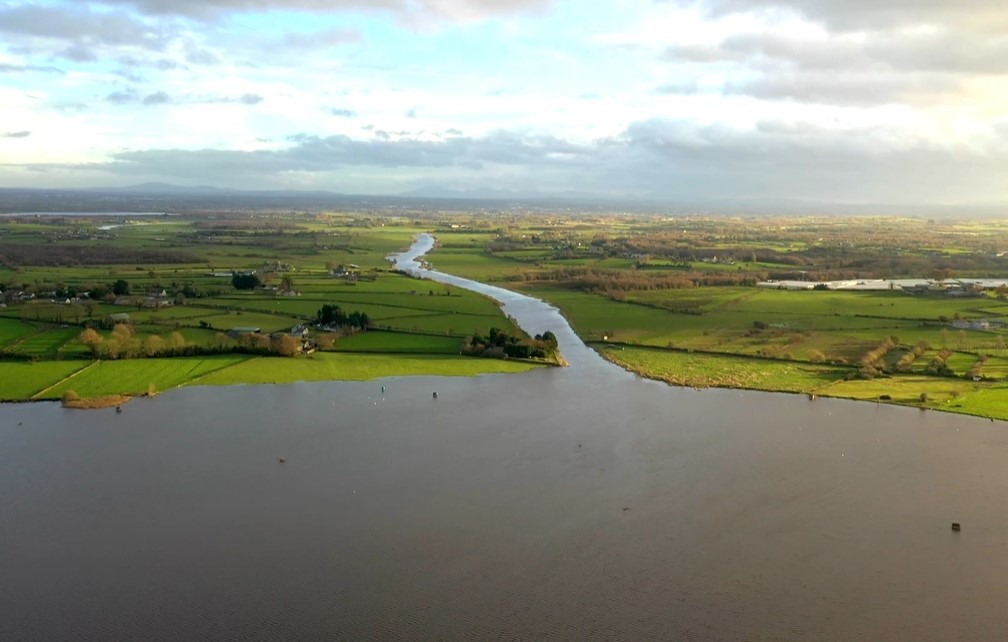FOR a year, The Detail has been investigating serious concerns about the management of one of Northern Ireland’s most precious resources - Lough Neagh.
The 392 km2 lough is the largest freshwater lake in Ireland and Britain and one of the biggest in Europe.
Besides supplying Northern Ireland with nearly half of its drinking water for decades, the lough is also home to dozens of protected species - including birds, fish and insects.
But campaigners have long been concerned by management of the lough, which borders five of Northern Ireland’s six counties, and the impact of sand extraction on key species.
There are many pressures on the lough.
For years, the water has been classed as ‘hypereutrophic’, meaning it has too many nutrients - leading to algal growths and low oxygen levels that can kill fish.
The bed and banks of Lough Neagh are owned by the Earl of Shaftesbury, Nicholas Ashley-Cooper, an English aristocrat based in Dorset.
Sand has been dredged from the bed of the lough for decades. But the practice has only been regulated since January 2021, after planning controls were introduced by then Infrastructure Minister Nichola Mallon.
Investigations by The Detail have revealed that:
- Sand dredging has caused severe scars of up to 56 feet (17 metres) deep on the lough bed
- For years, no fish have lived in areas of the lough where sand has been dredged
- The sand has been used to build roads and high-profile sports venues across Ireland and Britain, including Tottenham Hotspur FC’s £1bn new stadium in London
- Quarrying and sand dredging firms received millions of pounds in tax relief as part of a government scheme which, following The Detail’s work, is being investigated by the Department for Agriculture, Environment and Rural Affairs (Daera)
- Community groups are ramping up their efforts to try and bring the lough into public ownership
Tax breaks
During much of the time The Detail has been investigating Lough Neagh, there has been no functioning government in Northern Ireland.
The power-sharing institutions at Stormont collapsed in March last year, amid an ongoing political row over a post-Brexit trade protocol which has effectively created a customs border between Northern Ireland and Britain.
As part of the investigation, The Detail shone a spotlight on a scheme which granted sand extraction firms at Lough Neagh between £9.6 and £16.3 million in tax credits.
The Aggregates Levy Credit Scheme (ALCS) was a HM Revenue & Customs (HMRC) scheme administered by Northern Ireland’s then-Department of the Environment (DoE) between 2004 and 2010.
ALCS has drawn comparisons with the ‘cash for ash’ scandal which led to the collapse of the Northern Ireland Assembly between 2017 and 2020.
After The Detail raised serious concerns about the scheme, including that tax breaks were given to some dredging firms despite question marks over their planning and environmental consents, Daera announced it was investigating.
Hundreds of ALCS files were destroyed between December 2021 and August 2022.
Daera files on ALCS claims for Lough Neagh sand firms were disposed of first - six months before the remaining ALCS records were destroyed.
A Daera spokeswoman told The Detail that it is carrying out a “preliminary fact finding investigation into allegations made in relation to the management of ALCS records, principally, that these were destroyed for purposes of concealment”.
"As we take such allegations or potential allegations of whistleblowing very seriously this initial investigation is being carried out under departmental whistleblowing policy and procedures,” she said.
“Addressing the allegations involves looking at the wider background to the ALCS.”
The spokeswoman said because the investigation is ongoing it “would not be appropriate to comment further on it at this stage”.
Absence of data
Despite the lough’s international importance as a wildlife habitat, no Stormont department or agency carries out regular surveys of the lough bed to measure the impact of sand extraction.
Research carried out by Dr Chris Hackney, from Newcastle University, is the first major piece of work to be carried out into the impact of extraction in the last few decades.
He surveyed an area of half a square kilometre where around two million tonnes of sand have been dredged in recent years.
His work found that sand dredging alone has created scars of up to 56 feet (17 metres) deep in places.
International sand mining experts have told The Detail that they are concerned by the management of the lough.
Kiran Pereira, one of the co-authors of a 2022 UN report into global sand extraction, told The Detail that the handling of dredging at the lough made it an anomaly within Europe.
“Sand extraction in Europe has come a long way in terms of managing licensing operations, monitoring the impacts of the activity and land restoration post-mining and other statutory requirements,” she said.
“However, there are still exceptions and Lough Neagh appears to be a prominent outlier.”

Nicholas Ashley-Cooper with his mother Christina Eva Ashley-Cooper in 2007. Photo by Stephane Danna/AFP via Getty Images
Management concerns
Any attempt to manage the lough is complicated by its ownership.
Although Lough Neagh’s water is publicly-owned, the bed and banks are owned by the Earl of Shaftesbury.
The Shaftesbury Estate receives royalties for every tonne of sand dredged.
It also receives a small amount of ground rent from NI Water - the publicly-owned company which is responsible for running and maintaining Northern Ireland’s water infrastructure.
Campaigners told The Detail that the Shaftesbury Estate’s ownership of the lough, alongside an alleged lack of interest in the resource within government, has led to poor and fragmentary management.
Dr John Spence, secretary of the Lough Erne Rivers Trust, said issues around ownership were preventing the lough from being properly managed.
“The present reality - that royalties are being paid to a private landowner… on the basis of grants and letters originating from the time of Charles I - is archaic and ludicrous,” he said.
“In most other national jurisdictions with a respect for and concerns for sustainable environmental administration, ancient grants and letters to ‘Undertakers’ have long been superseded or overridden by contemporary law and nationally-applied environmental regulations and practice.”
The Shaftesbury Estate has never responded to any requests for comment from The Detail.
Attempts were made in the 1970s, and again in 2012, to bring the lough into public ownership.
Now two separate campaigns - one to bring it into community ownership and another to bring it under Northern Ireland government control - have renewed their efforts, around a decade after the last public ownership attempt failed.
The Lough Neagh Development Trust, which favours community ownership, will host a major conference this year to garner support for its campaign.
Rights of nature
More recently, questions around Lough Neagh’s ownership have fed into a wider debate on the rights of nature in Ireland.
Several councils in Northern Ireland have passed motions backing the inclusion of the rights of nature into policy.
In November, a citizens' assembly in the Republic of Ireland voted in favour of a referendum to put the protection of biodiversity and nature into the Irish Constitution.
James Orr, director of Friends of the Earth Northern Ireland, said Lough Neagh could follow the example of Lake Erie in the USA.
A bill of rights was passed in 2020 allowing residents of Toledo, Ohio, to bring lawsuits on behalf of the contaminated lake.
“Private ownership on Lough Neagh hasn’t worked, and public ownership in a dysfunctional state won’t work either,” he said.
“Lake Erie provides an example of how complex wetland systems on this scale can be afforded rights not just to exist, flourish and evolve - but also to be restored after decades of abuse and neglect."
He added: “Recognising the interdependency of the rights of people and the rights of nature at Lough Neagh could provide the basis for a new global standard on how an internationally important lake of this kind could be managed and sustained for the future.”
===
- Tommy Greene, the journalist who wrote this article, is a Bertha Foundation fellow. His recent work has appeared in The Guardian, The Irish Times and the Bureau of Investigative Journalism
- The Bertha Foundation is a philanthropic organisation supporting activists, journalists and lawyers from all over the world to bring about social and economic justice, and human rights for all. To find out more about the Foundation, please click here.
- This is the ninth in a series of publications that Tommy has produced as part of the Bertha Challenge programme. The 2022 Challenge has now come to a close.
 By
By

